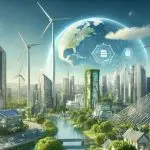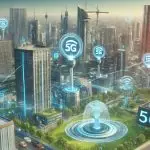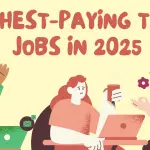Green technology has emerged as a powerful force in reshaping how we interact with the environment and manage resources. In 2025, the drive towards sustainability has reached unprecedented levels, with innovations transforming industries and daily life. From renewable energy to eco-friendly transportation, green tech is paving the way for a future that balances economic growth with environmental preservation. This article explores how green technology is changing the world in 2025, highlighting key advancements, challenges, and opportunities.
The Rise of Renewable Energy
1. Solar Power Advancements
Solar energy has seen remarkable innovations in 2025, making it more efficient and accessible than ever. Perovskite solar cells, known for their high efficiency and low cost, are now widely adopted. These cells are lightweight and flexible, enabling integration into windows, vehicles, and even clothing.
Key Benefits:
- Increased energy conversion rates (up to 30%).
- Cost reductions making solar panels affordable for households.
- Solar farms powering entire cities sustainably.
2. Wind Energy Efficiency
Wind turbines have become smarter and more efficient, thanks to AI and IoT technologies. Predictive maintenance systems ensure maximum uptime, while advanced materials reduce noise and increase durability.
Highlights in 2025:
- Offshore wind farms producing record-breaking energy.
- Hybrid systems combining solar and wind for continuous power supply.
3. Energy Storage Breakthroughs
Battery technology has revolutionized how we store and use renewable energy. Solid-state batteries offer higher capacity, faster charging, and longer lifespans, addressing the intermittency of renewable sources like solar and wind.
Notable Innovations:
- Community-level energy storage solutions.
- Affordable home batteries integrated with smart grids.
Eco-Friendly Transportation
1. Electric Vehicles (EVs)
Electric vehicles dominate the automotive market in 2025, with advancements in battery technology extending ranges up to 600 miles on a single charge. Charging infrastructure has also expanded significantly, with fast-charging stations available on highways and in urban areas.
Major Trends:
- EVs becoming more affordable than traditional internal combustion engine vehicles.
- Autonomous EV fleets reducing congestion and emissions in cities.
2. Hydrogen-Powered Vehicles
Hydrogen fuel cell vehicles are gaining traction as an alternative to EVs, especially for long-haul transportation. Hydrogen is produced using renewable energy, ensuring a carbon-neutral process.
Applications:
- Heavy-duty trucks and buses.
- Public transport systems in major cities.
3. Smart Transportation Systems
Smart cities in 2025 leverage AI to optimize traffic flow and reduce emissions. Connected vehicle technologies enable real-time communication between cars and infrastructure, improving efficiency.
Key Features:
- Dynamic traffic management systems.
- Shared mobility platforms integrating EVs and public transit.
Green Tech in Construction
1. Sustainable Building Materials
The construction industry is embracing materials like cross-laminated timber, recycled steel, and eco-friendly concrete to reduce carbon footprints. These materials are not only sustainable but also enhance building durability.
Popular Innovations:
- Biodegradable insulation materials.
- 3D-printed homes using sustainable resources.
2. Energy-Efficient Smart Homes
Smart homes in 2025 are designed to minimize energy consumption. Advanced home automation systems control lighting, heating, and cooling based on occupancy and weather conditions.
Technological Integration:
- Solar panels with integrated battery storage.
- IoT-enabled appliances reducing energy waste.
3. Urban Sustainability Initiatives
Urban planners are prioritizing green spaces, sustainable transportation, and renewable energy integration. Vertical gardens and green roofs are common features in modern cities.
Examples:
- Smart cities powered entirely by renewable energy.
- Community gardens promoting local food production.
Role of AI and IoT in Green Tech
1. AI-Driven Energy Management
AI is at the heart of optimizing energy usage. Machine learning algorithms predict energy demand and adjust supply, ensuring efficiency and reducing waste.
Applications:
- Smart grids balancing supply and demand in real time.
- Energy usage analytics for businesses and households.
2. IoT-Enabled Sustainability
IoT devices connect appliances, vehicles, and infrastructure, creating a network that enhances efficiency. Smart sensors monitor energy usage, water consumption, and waste generation.
Examples:
- Smart thermostats saving energy in homes.
- Waste management systems tracking and optimizing recycling efforts.
3. Predictive Analytics for Environmental Monitoring
Predictive analytics tools use AI to monitor environmental conditions and predict disasters. This technology helps governments and organizations take proactive measures.
Notable Applications:
- Early warning systems for floods and wildfires.
- Monitoring air and water quality in real time.
Green Tech Startups to Watch in 2025
Numerous startups are driving innovation in green technology. These companies focus on renewable energy, sustainable materials, and eco-friendly solutions.
Top Startups:
- EcoCharge: Specializing in portable solar-powered chargers.
- GreenBuild: Pioneering sustainable construction technologies.
- HydroDrive: Developing hydrogen-powered vehicle solutions.
Challenges and Opportunities
1. Barriers to Adoption
Despite its benefits, green tech faces challenges such as high initial costs and resistance to change. Developing countries struggle with limited resources to implement large-scale green initiatives.
2. Policy Support and International Collaboration
Governments play a crucial role in promoting green tech. Policies like tax incentives for renewable energy adoption and stricter emissions regulations are driving change.
3. Economic Opportunities
Green tech opens up new markets and job opportunities. From manufacturing EVs to installing solar panels, the industry creates sustainable economic growth.
The Future of Green Tech
Looking ahead, green technology will continue to evolve, addressing global challenges like climate change and resource depletion. Innovations in areas such as carbon capture, sustainable agriculture, and circular economies will redefine how we live and work.
Anticipated Breakthroughs:
- Widespread adoption of carbon-neutral technologies.
- Advances in bioengineering for sustainable food production.
- Integration of renewable energy with blockchain for decentralized energy markets.
Green technology is no longer a choice but a necessity for a sustainable future. In 2025, its impact is evident across industries, improving lives while protecting the planet. As innovation continues, green tech will play an even more significant role in shaping a cleaner, greener world.
By embracing these advancements, individuals, businesses, and governments can contribute to a sustainable future. Together, we can ensure that green technology continues to change the world for the better.










